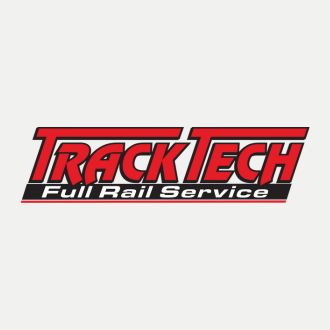Consolidated Rail Infrastructure and Safety Improvement Grants: Getting ahead of the NEPA Process
At the moment, the Federal Railroad Administration (FRA) is in a state of flux along with all other Federal administrations. We anticipate that there still will be opportunities for our Class I and shortline partners to apply for Consolidated Rail Infrastructure and Safety Improvement (CRISI) grants sometime in the next four years. As is often the case, planning ahead for when that opportunity arises is going to move your project application to the top of the stack and help you get your award monies faster. Having been through this process a few times, there are a few lessons learned you can apply to your project that will hopefully help lubricate the National Environmental Policy Act (NEPA) portion. Of course, NEPA is only one of a thousand moving parts on these projects, but making any one part easier will just be one less thing to worry about.
Review Potential Show Stoppers: Everyone has probably had a project that might have been going along smoothly, and then, out of the blue, you find a drum, or a fish, or something that stops the project dead. Better to know about those potential headaches ahead of time. Many project managers will choose to perform a critical issues analysis before project design that can look for issues like:
- Potential soil contamination or landfills
- Threatened and endangered species or wetlands
- Whether that trestle you are replacing needs to be reviewed by an architectural historian
Knowing the answer to these questions before project design can save you time and money later. Sometimes even changing one structural member on a bridge can trigger more Section 106 review than anyone wants to go through if it is not done right!
Draft the NEPA Ahead of Time: While it is not required to have your NEPA drafted before applying for a CRISI grant, it certainly can move you to the top of the list during review. Depending on the NEPA needs, it may be worth your while to draft a NEPA Categorical Exclusion (CE) worksheet (FRA F217) and include it with your grant application. This assumes that your project will not have any significant impacts that require more than minimal mitigation and an Environmental Assessment (EA) would not be needed. You could choose to complete an EA ahead of time as well, but since this will not be covered by the grant disbursement it is a riskier cost. But developing a desktop CE can usually be cost effective and helps assure your project moves through the FRA review process more quickly.
Avoid Section 106 if at All Possible: The Final Section 106 Program Comment for Rail Rights-of-Way was not only innovative but a thing of beauty when first introduced. It allowed many projects unlikely to result in cultural or historical impacts to avoid review under Section 106 of the National Historic Preservation Act. Over the years since, FRA has gradually inched up their expectations of work being performed in the rail right of way (ROW) to require nearly if not full Section 106 review unless you can make a technically defensible demonstration that the area has been previously disturbed. Some approaches that can help:
- Keep that sidetrack project in an area of a previous track: If you used to have a track there at one time and there is still some evidence of it, that is where you want to put your new track. Any disturbance of an area, even in your ROW, that did not have previous track is likely to trigger Section 106 review.
- Make sure your bridge repairs are “in kind”: And when they say in kind they really mean in kind. Not only does this require the same materials be used, e.g. wood members for wood members, even the aesthetics have to be considered. For one project where a metal bridge was being repaired with updated metal technology that did not require the replacement of metal cross ties, FRA still required the old cross ties be put back on to retain the same aesthetic, even on the underside of the bridge deck.
- All fill, no cut: If you have to lay track in a part of your ROW that was not previously disturbed, try to fill and not cut. Cutting into soils has the potential to disturb archeological or historic artifacts that might be present. In general, filling will not disturb them. If at all possible, do not cut soils unless absolutely necessary.
Combine Projects of Similar Scope that Fit Completely Under the Section 106 Program Comments: FRA has begun allowing some efficiencies for projects that are extremely unlikely to result in significant impacts and completely fit under the Section 106 Program Comments. For instance, replacing ties or resurfacing rail, activities that are clearly in previously disturbed areas and unlikely to have any impact on natural resources, may be considered for combining into a single CE. So, if you have three tie replacement projects on a single rail line or two in the same geographic vicinity, save yourself some time and cost and consider combining them into a single CE even though they may be spaced out far enough that they could otherwise be considered separate “projects” under NEPA. Always consult with your FRA NEPA staff ahead of time to be sure they are willing to consider this option, but staff seem to want to streamline their workload as well if at all possible. Bring them into the conversation early and often and figure out what the best way might be to work together to get your NEPA effort done as efficiently as you can.
Who knows what might be coming down the pike, or the rail line, these days as Federal regulations and agencies are being reviewed for efficiencies and even elimination. But we hope the FRA will continue to offer CRISI grants well into the future. These monies have helped many of our rail partners improve the safety of operations on their railroads and avoided potential incidents that could impact the environment and risk lives. Looking forward to these opportunities in the future, also look for ways to work with the FRA NEPA staff to help streamline your process and move your grant application to the top of the stack for a win!










